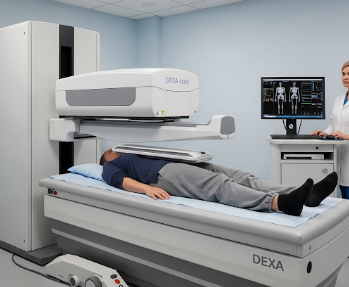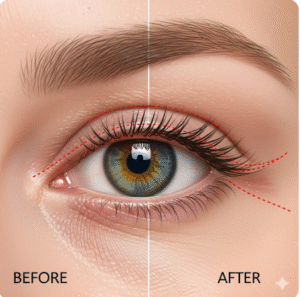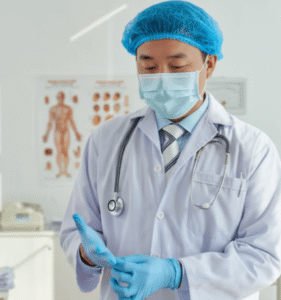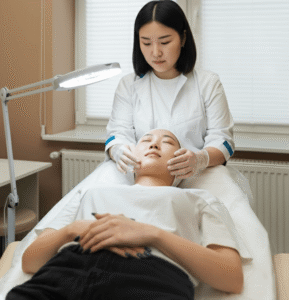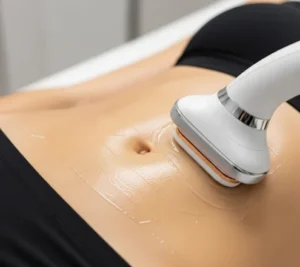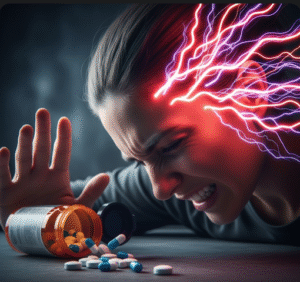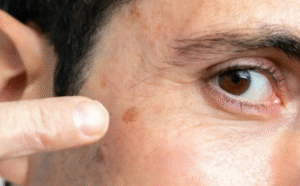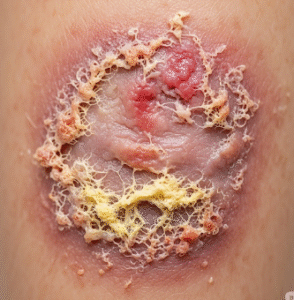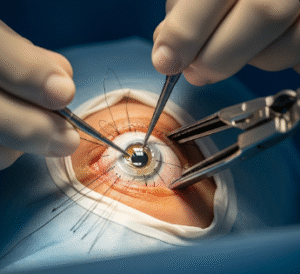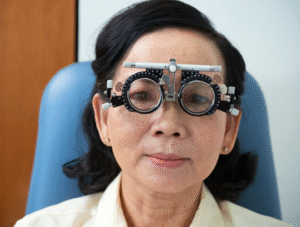What is a DEXA Scan?
A DEXA scan (Dual-Energy X-ray Absorptiometry) is a non-invasive imaging test used to measure bone mineral density (BMD). It is considered the gold standard for diagnosing osteoporosis, assessing fracture risk, and monitoring bone health over time.
DEXA scans provide detailed information about the density of bones in critical areas, typically the spine, hip, and sometimes the forearm. The results are often expressed as:
✔️ T-score – Compares bone density to a healthy young adult. A T-score ≤ -2.5 indicates osteoporosis.
✔️ Z-score – Compares bone density to someone of the same age and sex.
In Korea, DEXA scans are widely available in hospitals, radiology centers, and health check-up clinics. Korean hospitals use high-resolution, low-radiation DEXA machines that provide fast, accurate, and reliable results. Many international patients visit Korea for bone health assessments due to the accuracy, affordability, and expertise available.
➡️ Non-invasive and painless procedure
➡️ Measures bone strength and fracture risk
➡️ Essential for preventive care in at-risk populations
Why It’s Done
DEXA scans are primarily performed to detect bone loss before it leads to fractures. Common reasons include:
✔️ Postmenopausal women – Increased risk of osteoporosis due to decreased estrogen
✔️ Older adults – Age-related bone loss in men and women
✔️ Patients with fractures – Assess underlying bone weakness
✔️ Individuals with chronic conditions – Diabetes, thyroid disorders, or long-term steroid use
✔️ Monitoring treatment – For patients on osteoporosis medications, DEXA evaluates effectiveness
Benefits of Early Screening:
➡️ Prevent fractures → Early intervention reduces the risk of hip, spine, and wrist fractures
➡️ Guide treatment decisions → Doctors can recommend medications, lifestyle changes, or supplements
➡️ Track bone health over time → Identify if bone density is improving or declining
➡️ Reduce healthcare costs → Preventing fractures reduces hospitalization and long-term care expenses
In Korea, annual or biennial DEXA scans are recommended for postmenopausal women and men over 65, as well as for high-risk patients of any age.
Alternatives
While DEXA is the gold standard, other methods for assessing bone health exist:
⭐ Quantitative Ultrasound (QUS) – Uses sound waves on the heel or wrist. Less precise but portable and radiation-free.
⭐ CT Bone Densitometry (QCT) – Provides volumetric bone density but involves higher radiation.
⭐ Peripheral DEXA – Measures bones in the wrist or heel; often used for screening in small clinics.
⭐ Biochemical Markers of Bone Turnover – Blood or urine tests that indicate bone metabolism, though less accurate than imaging.
👉 While these alternatives are useful, a full DEXA scan is preferred for accurate diagnosis and treatment planning.
Preparation
DEXA scans are simple to prepare for. Korean clinics emphasize pre-test instructions to ensure accurate results:
🔹 Wear comfortable clothing – Avoid clothing with metal buttons, zippers, or belts
🔹 Remove jewelry and metal objects – They can interfere with X-ray imaging
🔹 Avoid calcium supplements 24 hours prior – To prevent false elevation of bone density
🔹 Inform the technician of recent procedures – Including barium exams or contrast studies
🔹 Pregnancy precaution – Not recommended for pregnant women due to radiation
⭐ No fasting or sedation required
⭐ Quick procedure – Typically completed in 10–20 minutes
How It’s Done
DEXA scans are non-invasive and painless. The steps are:
- Positioning
✔️ Patient lies on a padded table
✔️ Feet may be placed in a brace for hip alignment - Scanning Process
🔹 A low-dose X-ray passes over the targeted areas (spine, hip, forearm)
🔹 Detectors measure how much X-ray is absorbed by bones vs. soft tissue - Image Capture & Analysis
➡️ High-resolution images generated in minutes
➡️ T-scores and Z-scores automatically calculated - Review & Consultation
🔸 Doctor explains results, fracture risk, and treatment options
🔸 Comparison with previous scans, if available, to monitor trends
Highlights:
✔️ Quick and painless
✔️ Minimal radiation exposure – About 1/10 of a chest X-ray
✔️ Highly accurate for detecting early bone loss
Recovery
Recovery from a DEXA scan is immediate since it is non-invasive:
✔️ No downtime – Patients can resume normal activities immediately
✔️ Mild discomfort – Rare, only if lying flat for a long time causes stiffness
✔️ No post-procedure restrictions – Eat, drink, and drive normally
⭐ Patients may be advised to schedule follow-up scans every 1–2 years depending on results and risk factors.
Complications
DEXA scans are extremely safe, but minor considerations include:
⚠️ Radiation exposure – Very low, generally considered safe for adults
⚠️ Inaccurate results – If patient has metal implants, recent fractures, or abnormal spine curvature
⚠️ Pregnancy caution – Not recommended for pregnant women
⚠️ Allergic reactions – Not applicable, as no contrast dye is typically used
➡️ In Korea, advanced machines and trained technicians minimize errors and ensure patient safety.
Treatment Options in Korea
If a DEXA scan shows low bone density or osteoporosis, Korea offers advanced treatments and preventive care:
🏥 Medication Therapy – Bisphosphonates, denosumab, or teriparatide for bone strengthening
🏥 Hormone Replacement Therapy (HRT) – For postmenopausal women, under careful monitoring
🏥 Vitamin & Mineral Supplementation – Calcium, Vitamin D, and other micronutrients
🏥 Physical Therapy & Exercise Programs – Supervised resistance and balance training to prevent falls
🏥 Follow-up Monitoring – Repeat DEXA scans to assess treatment effectiveness
Why Korea is a Preferred Destination:
✔️ Cutting-edge DEXA machines for precise measurements
✔️ Skilled endocrinologists and radiologists specialized in osteoporosis
✔️ Affordable screening and treatment packages for locals and international patients
✔️ Medical tourism services – Translation, transportation, and hotel arrangements
Approximate Costs in Korea:
🔹 Basic DEXA Scan → $50 – $100
🔹 Full Spine & Hip Scan with Analysis → $120 – $250
🔹 Follow-up or Repeat Scans → $80 – $150
Conclusion
DEXA scans are essential for early detection of osteoporosis and fracture risk, particularly in older adults and high-risk populations. Regular screening allows timely intervention with medication, lifestyle changes, and follow-up monitoring.
In Korea, patients benefit from:
✔️ High-precision imaging technology
✔️ Expert radiologists and endocrinologists
✔️ Affordable and accessible screening programs
✔️ Comprehensive medical tourism support
👉 Choosing a DEXA scan in Korea ensures accurate diagnosis, effective prevention, and management of bone health, helping patients maintain mobility, independence, and quality of life well into older age.

